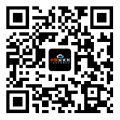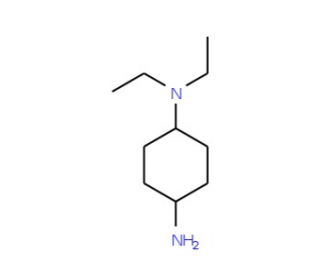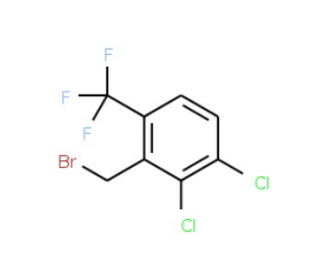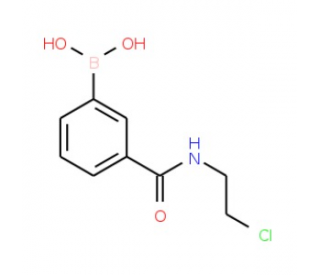详细说明
Species Reactivity
Human
Specificity
Detects human 4‑1BB Ligand/TNFSF9 in direct ELISAs and Western blots. In Western blots, no cross-reactivity with recombinant mouse (rm) 4-1BB Ligand, recobinant human (rh) APRIL, rhBAFF, rmEDA-A2, rhFas Ligand, rhGITR Ligand, rhLIGHT, rhLymphotoxin alpha 1/ beta 2, rhLymphotoxin alpha 2/ beta 1, rhOX40 Ligand, rhTNF-alpha, rhTRAIL, rhTRANCE, or rhTWEAK is observed.
Source
Monoclonal Mouse IgG 2B Clone # 282220
Purification
Protein A or G purified from hybridoma culture supernatant
Immunogen
E. coli-derived recombinant human 4‑1BB Ligand/TNFSF9
Arg71-Glu254
Accession # P41273.1Formulation
Supplied in a saline solution containing BSA and Sodium Azide.
Label
Phycoerythrin
Applications
Recommended
ConcentrationSample
Flow Cytometry
10 µL/10 6 cells
See below
Please Note: Optimal dilutions should be determined by each laboratory for each application. are available in the Technical Information section on our website.
Data Examples
Flow Cytometry | Detection of 4‑1BB Ligand/TNFSF9 in Raji Human Cell Line by Flow Cytometry. Raji human Burkitt's lymphoma cell line was stained with Mouse Anti-Human 4‑1BB Ligand/TNFSF9 PE‑conjugated Monoclonal Antibody (Catalog # FAB2295P, filled histogram) or isotype control antibody (Catalog # , open histogram). View our protocol for . |
Preparation and Storage
Shipping
The product is shipped with polar packs. Upon receipt, store it immediately at the temperature recommended below.
Stability & Storage
Protect from light. Do not freeze.
12 months from date of receipt, 2 to 8 °C as supplied.
Background: 4-1BB Ligand/TNFSF9
4-1BB Ligand (4-1BBL; also CD137L) is a 32 kDa type II transmembrane protein that belongs to the TNF superfamily (TNFSF) of molecules (1‑4). The human 4-1BBL cDNA encodes a 254 amino acid (aa) protein that contains a 25 aa N-terminal cytoplasmic domain, a 23 aa transmembrane segment, and a 206 aa C-terminal extracellular region (5). The extracellular domain (ECD) of 4-1BBL has a jelly-roll, beta -sandwich tertiary structure that is similar to other TNFSF members. There is only one cysteine in the human ECD, and no potential N-linked glycosylation sites. The potential exists, however, for O-linked glycosylation. The human 4-1BBL ECD shares 32% and 35% aa identity with mouse and rat ECD, respectively. In the cytoplasmic domain, human 4-1BBL is 55 aa shorter than the equivalent region in rodents. 4-1BBL is expressed by activated B cells, macrophages, dendritic cells, activated T cells, neurons and astrocytes (2, 3, 6). A bioactive 26 kDa soluble form of 4-1BBL, presumably generated by MMP cleavage, occurs in humans (4). Human 4-1BBL signals through both CD137/4-1BB and itself. Its cytoplasmic tail participates in reverse signaling that induces apoptosis in T cells and cytokine secretion (IL-6; TNF-alpha ) by monocytes (7, 8). 4-1BBL binding to CD137/4-1BB produces a number of effects. It seems to play a key role in the T cell recall response. It maintains T cell numbers at the end of a primary response, and induces CD4+ and CD8+ T cells to proliferate and secrete cytokines such as IL-2 and IFN-gamma in CD4+ T cells, and IFN-gamma in CD8+ T cells (9, 10).
References:
Kwon, B. et al. (2003) Exp. Mol. Med. 35:8.
Salih, H.R. et al. (2002) Int. J. Clin. Pharmacol. Ther. 40:348.
Vinay, D.S. and B.S. Kwon (1998) Semin. Immunol. 10:481.
Salih, H.R. et al. (2001) J. Immunol. 167:4059.
Alderson, M.R. et al. (1994) Eur. J. Immunol. 24:2219.
Reali, C. et al. (2003) J. Neurosci. Res. 74:67.
Michel, J. et al. (1999) Immunology 98:42.
Langstein, J. et al. (1998) J. Immunol. 160:2488.
Wen, T. et al. (2002) J. Immunol. 168:4897.
Dawicki, W. and T.H. Watts (2004) Eur. J. Immunol. 34:743.
Entrez Gene IDs:
8744 (Human); 21950 (Mouse); 353218 (Rat)
Alternate Names:
41BB Ligand; 4-1BB Ligand; 4-1BBL; 4-1BB-L; CD137L; homolog of mouse 4-1BB-L; receptor 4-1BB ligand; TNFSF9; tumor necrosis factor (ligand) superfamily, member 9; tumor necrosis factor ligand superfamily member 9










 粤公网安备44196802000105号
粤公网安备44196802000105号